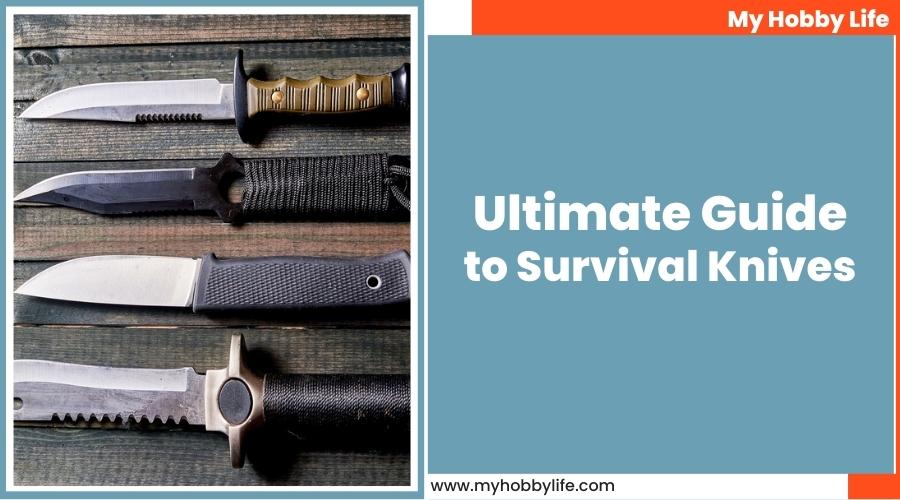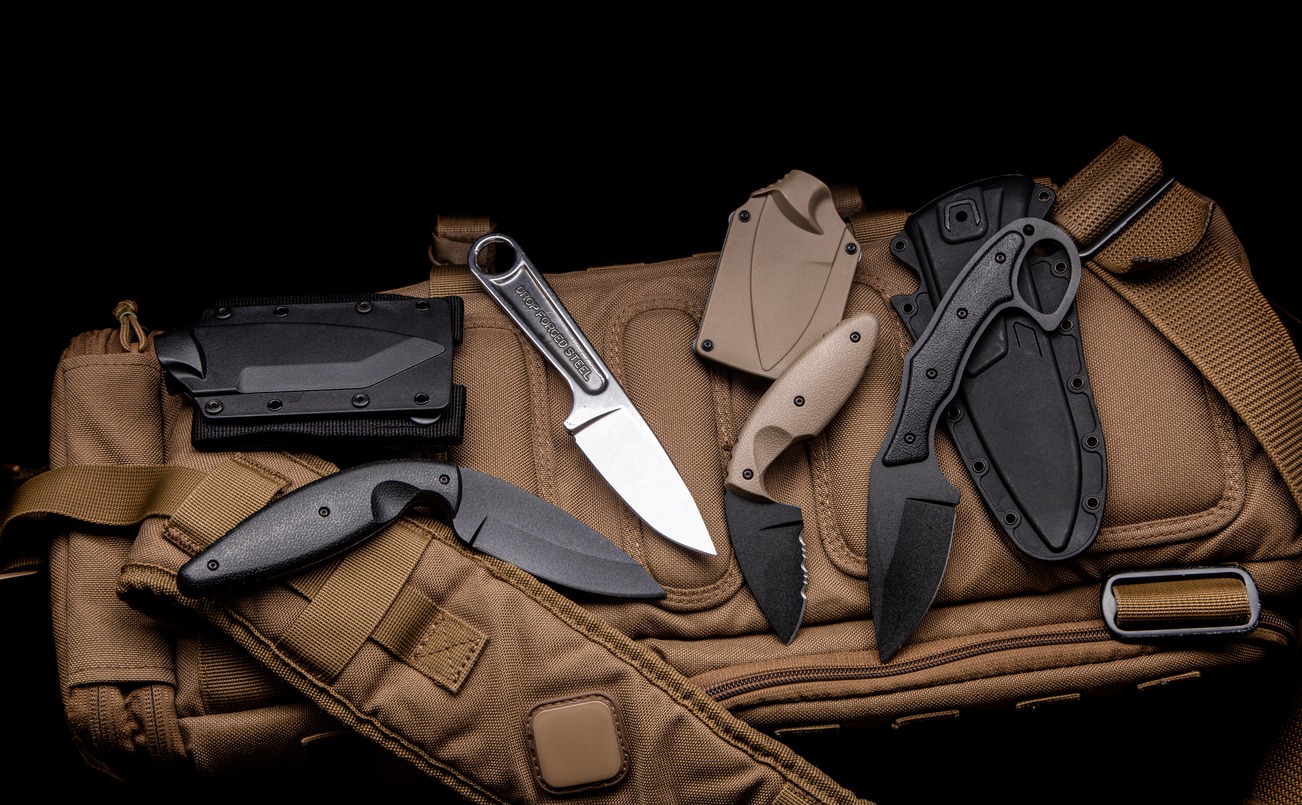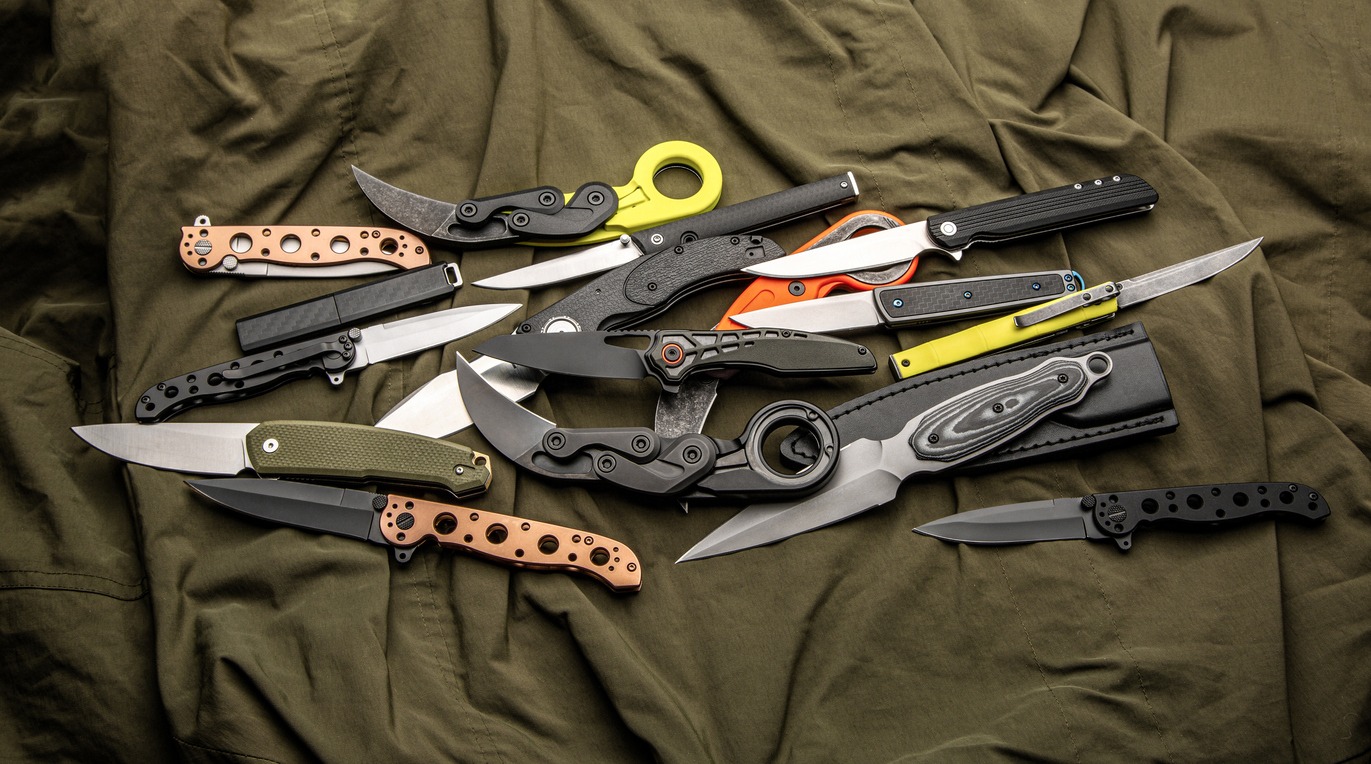A survival knife’s blade finish is frequently disregarded when purchasing one. However, it frequently has an impact on the blade’s toughness and corrosion resistance. It also affects how the knife looks and affects the knife’s overall cost. How do you decide which blade finish is best then? The satin finish, which strikes a good balance between toughness, corrosion resistance, and cost, is the optimum blade finish for survival knives.
Additionally, it is the most typical knife blade polish. A blade with a satin finish is typically less expensive than one with a mirror or polished finish, which takes more time to produce but still results in a strong and useful blade.
What is a Survival Knife?
An essential item of equipment for outdoor adventure and emergency preparedness is a survival knife. Knives made for wilderness and emergencies are called survival knives. They are distinct from kitchen knives, wood carving knives, and hunter blades even though you can use them to make tools, prepare food, and even go hunting. They perform admirably in every regard and can survive demanding daily use.
With a survival knife, you can carve delicate fish hooks, split wood, and cut thread and bandages for your first aid kit. They are a crucial component of your survival kit because they are durable and simple to sharpen.
How Critical is it to Choose a Survival Knife?
Already having a survival knife is fantastic. It’s even better to have an excellent survival knife, though. As a result, it’s crucial to have the ideal survival knife that is tailored to the user’s needs as well as the knife’s intended function.
Your knife should be adjusted for the use it will see. It must be large and robust enough for demanding survival duties, but you don’t want a machete because it would mean ignoring the smaller jobs that a survival knife can handle.
Additionally, you want your survival knife to be customized for you. You must ensure that it is the proper weight for you, provides your hand with a strong, solid, and safe grip, and enables you to perform what you need to do quickly and safely. This applies to more than simply the handle color and lanyard material.
Tips for Choosing a Survival Knife
A survival knife is mostly used for survival in outdoor wilderness settings or other emergencies where you need it to keep you alive. If your other equipment is destroyed, lost, or misplaced, the straightforward survival knife and sheath may also easily replace several additional instruments required for survival. It is a good idea to be aware of the various functions and survival-related uses that this one weapon can perform when selecting a survival knife.
Size
Better may not always equate to bigger in the case of a good survival knife. The knife blade length must provide some precision, control, and stability while still being simple to use and carry with you. You don’t want to carry a cumbersome, weighty knife that is also difficult to use. Additionally, it must be simple to get to when needed. The best length for a survival knife is between 9 and 11 inches, although they are available in a wide range of alternative lengths and with various characteristics that you could also find useful.
Features
A survival knife may have a variety of features, such as a sheath, depending on the situation. Because you can thrust or stab the knife to defend yourself, a survival knife with a sharp pointed tip may be a preferable choice.
When it comes to hunting, a spear point is efficient and can even be linked to a pole if necessary to make a spear. In addition to drilling and notching, gaining access to live bait, and cleaning and dressing small animals like fish, a sharp knife like this is handy for additional jobs.
If you need to light a fire or split wood to build a shelter, you can use a single-edged blade with a flat ground spine. You can also use the knife’s back, which is useful for tasks that would be impossible to complete if both edges were razor-sharp, including notching triggers for snares or traps.
Blade Material
Stainless steel and carbon steel are the two most widely used materials for blades. Blades made of stainless steel are harder on the Rockwell Scale, which measures a blade’s hardness, and are consequently more difficult to sharpen. However, Stainless Steel blades will maintain their sharpness for a lot longer than other blades when properly sharpened. Although carbon steel blades are simpler to sharpen, they corrode easily and lose their sharpness quickly. Blades made of carbon steel need a lot more upkeep and care than those made of stainless steel.
The Knife’s Tip’s Shape
Although tip design is largely a matter of personal opinion, always choose a survival knife shape that offers the most versatility. Various tip forms are used on survival knives to increase the blade’s utility.
- Drop Point: Drop Point blades are strong, adaptable, and useful for stabbing attacks. The curve from the blade’s spine to the tip makes it simple to spot the Drop Point. This knife blade design has lovely lines and a versatile, practical shape, making it a fantastic all-around design.
- Clip Point: Blades with a clip point are conventional, excellent for fine work, and best for stabbing blows. With one exception, the Clip Point and Drop Point are comparable. The Clip Point has a concave curvature to the tip rather than a convex curve. The intricate work on this blade design is exceptional near the tip.
- Tanto: Blades with a Tanto Point are robust, penetrating, and tactical. The Tanto Point blade is a tempting option for any tactical endeavor. Your Tanto knife won’t let you down because of its incredible toughness and piercing capacity. The Tanto blade has a lot of appeal for its bold lines and aesthetic distinctiveness outside of a purely tactical perspective.
- Spear Point: Blades with a spear point are symmetrical, balanced, and perfect for stabbing blows. The principal use of spear point knives is stabbing. Beyond that, though, you should also anticipate that your Spear Point knife will have a flexible, balanced edge that is perfect for slicing and other general chores. The blades of many Spear Points have two edges.
- Standard: Knives with a standard blade are practical, adaptable, and efficient for both slicing and stabbing. The Standard, sometimes referred to as Straight Back, is the most minimalist and polished blade design. The blade has a conventional blade belly and a straight spine angle, as its name would imply. Sometimes simplicity is preferable because this blade shape is so versatile.
Survival Knives Metal Types
Everyone has a distinct favorite metal for their survival knife that they swear by. In actuality, the grip and balance of the blade are more crucial. Many different metals can be used to make knives, but they are not all the same and don’t all have the same properties.
Stainless Steel
For relatively entry-level and reasonably priced survival knives, stainless steel is one of the most frequently utilized materials. Standard stainless steel is a great choice for a survival knife’s material because it is quite inexpensive and produces a low-priced knife with a respectable level of quality.
The main advantage of stainless steel is that, unlike many other metals, it won’t rust or corrode. Stainless steel is also fairly durable, although, despite this, it is neither the strongest nor the most durable metal. Because of this, the edge retention of a standard stainless-steel survival knife will be subpar, necessitating frequent sharpening.
Carbon Steel
This is the steel that has more carbon. Although carbon steel incorporates a variety of metal alloys, the fundamental difference lies in the amount of carbon present. Experts consider knives with carbon steel blades to be good survival knives.
Compared to stainless steel, carbon steel blades are less expensive, and heat treatment makes a big difference. The sole drawback to carbon steel is that corrosion is more likely to occur. Therefore, it requires appropriate care and maintenance. Your blade will become unbreakable with regular oiling, honing, and the right positioning. They can be used as fire starters since they emit sparks when contacted with a hard surface.
Why is a Good Blade Finish Important?
- Durability and Resistance to Scratches: The durability of the blade can be significantly impacted by the type of blade finish. For instance, a mirror-polished blade can be damaged but is incredibly strong and simple to maintain. It will be challenging to conceal it or restore the previous appearance in that situation. However, because they tend to be more expensive and used more for hunting or as collector’s items than as survival tools, mirror-polished knives are typically constructed with better steel. They frequently also give the steel a more thorough heat treatment, increasing its toughness. The knife is less prone to break, chip, or scrape as a result.
- Corrosion Resistance: In general, a knife’s corrosion resistance increases with the smoothness of the blade (rust and stains). This is because rough surfaces tend to trap water and moisture far better than those that are smooth. Therefore, more reflecting and polished blades will tend to collect moisture much less and will be less likely to rust or develop a patina. However, abrasive surfaces, such as stonewashed or bead-blasted blades, will often be more susceptible to corrosion. The blade material is one of many factors that, among others, affect corrosion resistance. In general, a higher carbon concentration indicates that the knife is more likely to corrode if improper care is not taken of it.
- Appearance: Finally, the finish has a significant impact on the blade’s ultimate appearance.
Uses of a Survival Knife
You’ll utilize survival knives for woodworking the majority of the time. You won’t be crafting spears and gutting and skinning creatures from your snares unless you’re already an experienced hunter. Even though these are crucial survival abilities, you need to be familiar with them to benefit from a survival knife.
Cutting or Slicing
The survival knife is your best buddy if you need to cut or slice veggies or wood out in the open. It will make it easier for you to do these chores. When you are traveling off the beaten road, a survival knife will also make it simple for you to easily chop leaves and other vegetation out of the way.
A top-notch survival knife can help you easily complete the task no matter what you need to cut. A good survival knife is ideal for cutting and slicing since it has a sharp blade. Whatever the circumstance, make sure you have a dependable, multipurpose knife on hand to assist you with all of your cutting and slicing requirements.
Self Defense
A knife is first and foremost a weapon. When you are alone in the bush, a survival knife can give you a great deal of security. You can protect yourself from predators like wild animals and even other people by using your survival knife. Additionally, you can use it as a weapon to capture food, including small wildlife and occasionally even fish. With the help of a survival knife, you can defend yourself from potential attacks and stay safe. Nothing beats your survival knife as a self-defense tool when you’re out in the wilderness.
Fire Making
If you ever find yourself in a position where you don’t have any fire-starting tools like flints, lighters, matches, or anything else. You need not worry at all because you can create a bow drill with your survival knife. It will take some time for you to start a fire, though, unless you already know how to do it and have the correct kind of wood. Sparks can fly from the blade of your knife in an instant.
Food Preparation
In a survival crisis, you can prepare food using this gadget. For your meals and to skin the large or small wildlife you have caught, you can chop up veggies and meat. You do not need to worry as long as you have your handy survival knife with you if you forget to pack kitchen knives for food preparation on your camping trip or while you are in a survival emergency.
Building Shelter
You are better off utilizing a hatchet or saw when constructing a shelter in the bush. But if you forgot to pack either of these items, your survival knife will work just as well. You can cut the wood and other items you need to construct your shelter with ease. Additionally, you can use it to form notches for cordage through which to thread stakes. You can use your survival knife as a hammer to drive tent pegs when you need to set up a tent, which will be helpful.
Whether you enjoy being prepared or not, a survival knife is an essential item to own. It has a variety of uses and is portable and pocket-sized, making it simple to bring with you wherever you go.


